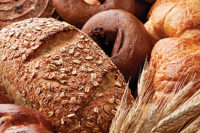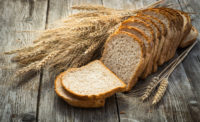Access to the right bakery ingredient premixes and bases can significantly streamline production time and remove the opportunity for human error—particularly when it comes to properly measuring micro ingredients and building in proofing and process tolerance for environmental variation. Taking things a step further, having standardized procedures for procedural steps like icing and decorating for sweet goods like doughnuts can likewise streamline production efficiency—particularly for some of the harder, upscale, differentiated, “wow” doughnuts finding an audience today.
According to Datassential, 65 percent of consumers are likely to try a gourmet doughnut. But gourmet doughnuts can fetch equally gourmet prices, going as high as $5 per unit—and research has shown that few operators are interested in making the leap, with only 9 percent looking to get into this market. And frankly, $5 is a prohibitive price point for most folks. So bakeries looking to capitalize on this market need to find ways to minimize costs by streamlining production and allowing very little room for error or wasted resources.
Premixes are common in the industry, with ingredient companies supplying bakers with plug-and-play solutions for doughnuts, as well as for other categories like tortillas, breads, etc. So when Dawn Foods recently launched a new program to streamline decorating procedures to give bakers an easy way to offer upscale, gourmet doughnuts, it caught my attention.
While retail doughnut products have taken a bit of a dip, down over 2 percent to $2 billion for the 52 weeks ending January 27, 2019 per IRI, Chicago, the foodservice market—dominated by Dunkin’ Brands, Tim Horton’s and Krispy Kreme—is up over 3 percent to $16 billion, per IBISWorld’s March 2018 “Doughnut Stores Industry in the U.S.” report. Bringing cost-effective upscale doughnuts into the in-store bakery, c-stores or retail bakeries could be a way to boost sales and capitalize on this market.
The Dawn Foods program features procedures, training, POS materials, ingredients, etc. for 12 gourmet doughnuts, including Hazelnut Red Velvet, which features chocolate, hazelnut and red velvet components. Such a treatment can easily boost the selling price by $1 per unit for only around $0.30 of additional cost inputs, thereby increasing profit margins. And it easily attracts increased attention.
I’ve seen other similar options that streamline efficiency for sweet goods, desserts and treats hit the market of late, including the whoopie pie program from Boston Baking and the cannoli program from Golden Cannoli. These approaches holds much promise to build market share through differentiated products that can stand out in a crowded marketplace.





